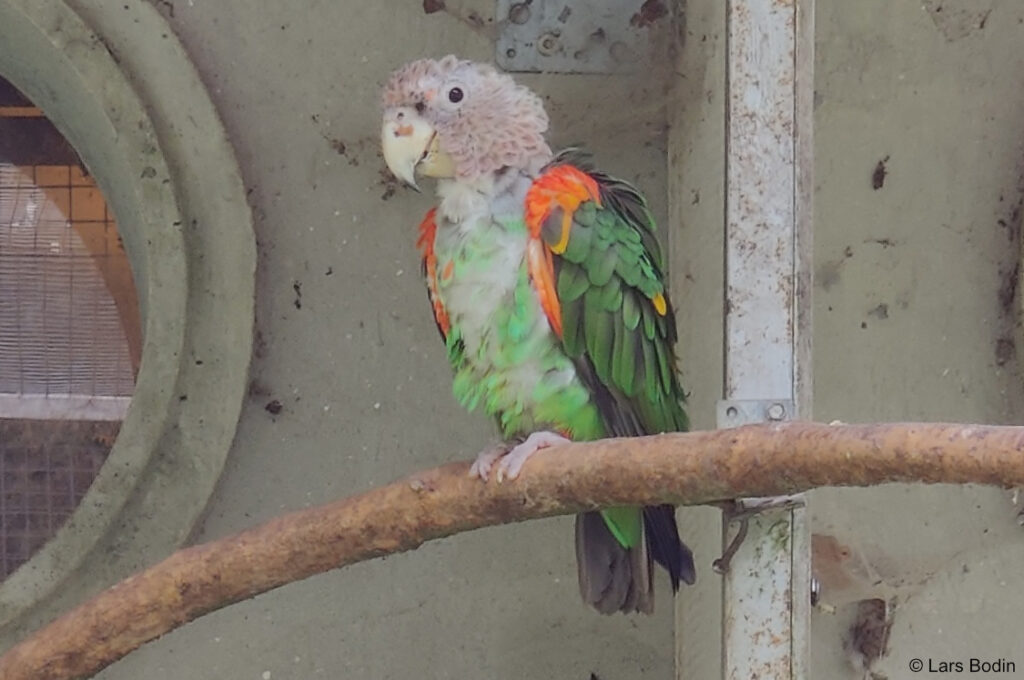Poicephalus robustus - Cape Parrot
Cape Parrot – Poicephalus robustus (Gmelin, JF, 1788) – are medium sized parrots with a large strong beak that can easily crack hard nuts but they are very gentle birds that rarely bite. They have great personality and are very skilled at imitating sounds and words but are rare as pets.
The Cape Parrot is listed as Vulnerable by the IUCN Red List due to loss of habitat and illegal capture for bird trade. It is also rare among breeders but actually breed well in captivity.
There are some dispute whether or not the Cape Parrot is a monotypic specie or if the closely related Brown-necked Parrot (Poicephalus fuscicollis) is a subspecies, other sources claim it is related to Poicephalus gulielmi. However recent studies support the Cape Parrot being a distinct taxa.
Description
The head and neck are dull olive/golden with a darker brown scalloping. The back and wings are dark green. The outer edges of the wings are orange-red. The flight-feathers and tail are black. Green rump. The chest underparts are green tinged with blue. Orange-red thighs and bend of wing.
Horn colored large beak. Iris is dark brown. The feets are dark grey.
The female has an orange-red patch on the front of the forehead.
The juveniles have a larger orange/pink patch on the forehead but they lack the orange-red color on the edge of the wings.
Length: 30-36 cm
Weight: 260-400 gram
Subspecies
None.
Taxonomy
- Order: Psittaciformes
- Family: Psittacidae
- Genus: Poicephalus
Synonyms
- Danish: Kappapegøje, Kap Papegøje
- English: Cape Parrot
- French: Perroquet du Cap, Perroquet robuste
- German: Kappapagei
- Portuguese: Papagaio-de-bico-grosso
- Spanish: Lorito Robusto
- Scientific: Poicephalus robustus
IUCN Red List

BirdLife International 2017. Poicephalus robustus. The IUCN Red List of Threatened Species 2017: e.T119194858A119196714.
https://dx.doi.org/10.2305/IUCN.UK.2017-3.RLTS.T119194858A119196714.en
Downloaded on 9 July 2021
Habitat
Southern and eastern South Africa (south to Eastern Cape).
The Cape Parrot live in temperate montane forests.
Diet
The Cape Parrot prefer fruits of Afrocarpus and Podocarpus but also feeds on a variety of seeds from tree species in the Afromontane mistbelt forests.
Aviculture
The Cape Parrot is rare among breeders even though they breed well in captivity.
The clutch contains 2-4 eggs.


